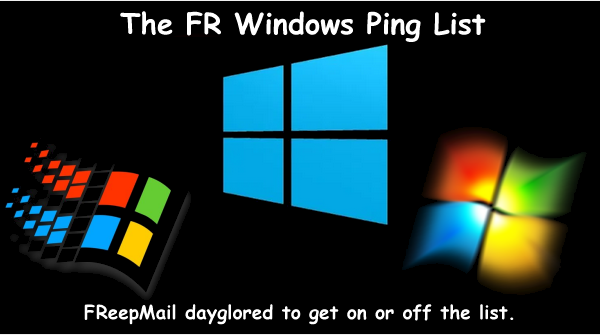
Posted on 05/22/2025 1:59:22 PM PDT by Openurmind
Microsoft has announced that it has open sourced the Windows Subsystem for Linux. WSL, as it's commonly called, allows users to run Linux apps directly on Windows.
All you need to do to install WSL is run the following command in a terminal: wsl --install
Refer to this article for additional details regarding how to set up WSL.
WSL was first announced at the Build 2016 developer conference, and shipped with the Windows 10 Anniversary update. While the original release was based on lxcore.sys, a pico process provider that Windows used to run ELF executables natively. Microsoft released WSL 2 in 2019, with native support for the Linux kernel, to improve the compatibility of apps. It also introduced new capabilities like GPU Support, options to run Linux apps with GUI, mirrored networking, DNS tunneling, session 0 support, proxy support, firewall support, etc.
Ever since WSL's initial release, users and developers had been requesting Microsoft to open source the virtual machine code. That's what happened at the Build 2025 dev conference. Microsoft says it had to work on decoupling WSL from the Windows codebase in order to release the source code as a standalone app.
Developers can now analyze the code, and contribute to it, propose enhancements, thus helping WSL to evolve into a more powerful app. The Windows Subsystem for Linux source code has been released under the MIT License. It is available on GitHub.
(Excerpt) Read more at ghacks.net ...

Looks like MS is a little worried. Lot of Linux talk lately... I think this might be good. It might help dispell myths and folks can try Linux to get an idea what it is really like. :)
Although they are reserving some control for themselves. Got any expert heads up on these files dayglored?
“It is worth noting that the following components are still part of the Windows image and are not open sourced at this time: Lxcore.sys, the kernel side driver that powers WSL 1. P9rdr.sys and p9np.dll, which run the “\\wsl.localhost” filesystem redirection (from Windows to Linux) are also closed source for now.”
Thanks!
None yet. I'll be looking into it soon, though. I have engineers who might be interested in trying it.

Thanks to Openurmind for the ping!
https://learn.microsoft.com/en-us/windows/wsl/opensource
I’m planning on converting to Linux later this year. Does anyone know if this would be a good way to do some basic testing of common Linux apps (e.g., LibreOffice) to see if there is good hardware compatibility? I’m running on a two-in-one computer, so I want to make sure the pen and the touchscreen work well under Linux. Could I install a desktop, such as Gnome? Or should I just go to the next step of testing with a live USB?
What’s the streamlined version of this for someone who wants to move completely to Linux, with no interest in having a PC being able to dual boot?
.. but having the ability to run Windows apps under Linux would be a plus.
Cool! please give me heads up on what they find. I would be curious “How much” control they are reserving for themselves with that. What is it connecting to and is it making any control influence on the Linux Distro and configurations it’s self... Is it spying on your Linux experience. :)
Install Wine on your Linus computer. I have found it to work well in doing just that.
Other than that, I'd just try running a live USB to be sure your hardware works as you expect. That way, there is no Windows artifacts hanging around to muddy up the troubleshooting waters, so to speak.
Getting wsl open sourced is good news. Perhaps a working group can track any CVEs to ensure they get patched in a timely fashion. Queue requests for new features when there is a working group capable of implementation and testing.
Yes scouter is right about “Wine”. An they just improved it to be much better at running Windows programs.
But you are asking about two situations. The concept in the article is Windows now allowing it to be easier to run a Linux under/inside the Windows environment. This is good for folks to make it easier to go try Linux to see what it really is and how easy it is to use. And then maybe make the switch to Linux from Windows later.
The second was your point about running Windows programs in Linux. This would come later if you choose to switch to Linux as your main OS. Then with Wine you can run “most” Windows programs on Wine. But Wine is not completely foolproof. Some apps have locked it so that it can only be run on windows. These particular apps do not always run with Wine as they should. It is sometimes hit and miss. But it is not the fault of Linux or Wine.
Thank you!
Hey! New media! Cool!
I understand Wine struggles with products from Adobe and MS Office. Now, I've been using Word 2010 because it meets my needs, I own the license, and I am not sharing Office documents with anyone else.
I wonder if Wine will handle my older version of Adobe Acrobat XI Standard. The problem here is the activation key will no longer work since Adobe shut that down.
I have an old ASUS I have Mint installed on. Great machine. It has the Hybrid drive so the GRUB and core base is extremely fast. The physical hard drive is for the extended partition that gets used less.
Disclaimer: Opinions posted on Free Republic are those of the individual posters and do not necessarily represent the opinion of Free Republic or its management. All materials posted herein are protected by copyright law and the exemption for fair use of copyrighted works.